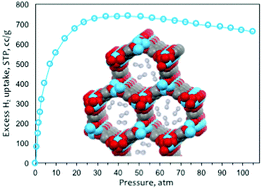An assessment of strategies for the development of solid-state adsorbents for vehicular hydrogen storage
Abstract
Nanoporous adsorbents are a diverse category of solid-state materials that hold considerable promise for vehicular hydrogen storage. Although impressive storage capacities have been demonstrated for several materials, particularly at cryogenic temperatures, materials meeting all of the targets established by the U.S. Department of Energy have yet to be identified. In this Perspective, we provide an overview of the major known and proposed strategies for hydrogen adsorbents, with the aim of guiding ongoing research as well as future new storage concepts. The discussion of each strategy includes current relevant literature, strengths and weaknesses, and outstanding challenges that preclude implementation. We consider in particular metal–organic frameworks (MOFs), including surface area/volume tailoring, open metal sites, and the binding of multiple H2 molecules to a single metal site. Two related classes of porous framework materials, covalent organic frameworks (COFs) and porous aromatic frameworks (PAFs), are also discussed, as are graphene and graphene oxide and doped porous carbons. We additionally introduce criteria for evaluating the merits of a particular materials design strategy. Computation has become an important tool in the discovery of new storage materials, and a brief introduction to the benefits and limitations of computational predictions of H2 physisorption is therefore presented. Finally, considerations for the synthesis and characterization of hydrogen storage adsorbents are discussed.

- This article is part of the themed collection: 2018 Energy and Environmental Science HOT Articles


 Please wait while we load your content...
Please wait while we load your content...